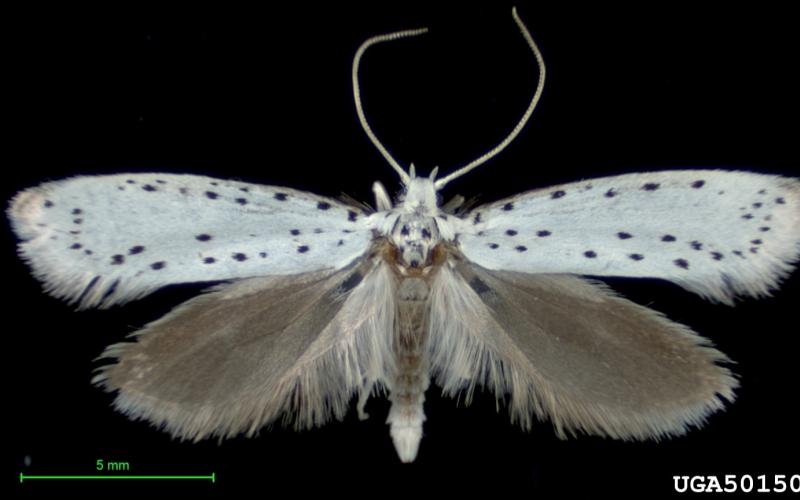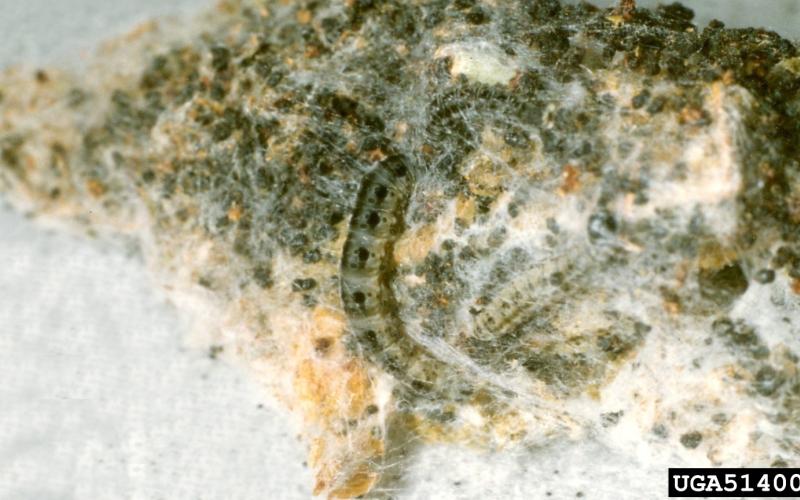Scientific name: Yponomeuta malinellus Zeller
Native range: Eurasia
At Risk
Apple ermine moth attacks apple and crab apple (Malus spp.) trees. In the Pacific Northwest, it primarily attacks abandoned orchards and backyard trees but can also become a pest in commercial orchards. It causes defoliation at the tips of apple tree branches, which can prevent fruit from growing and cause it to drop prematurely.
Distribution
The apple ermine moth has been present in the Pacific Northwest since at least the mid-1980s. It can be found in Oregon, Washington, and British Columbia. It has never been detected in Minnesota. However, in May 2001, larvae were discovered in Wisconsin on nursery stock imported from Oregon. The larvae were destroyed, and the moth did not establish itself in Wisconsin.
Biology
The apple ermine moth has one generation per year. It overwinters as young larvae beneath old egg masses from the previous year. In early spring, the larvae emerge and move to developing leaves, where they mine in the leaves. Later in the spring, they feed in communal webs, similar to tent caterpillars - several webs may form in each tree. Larvae continue feeding until June, when they pupate. Pupating caterpillars line themselves up neatly in tightly packed clusters. Adult moths begin to emerge in June and lay eggs from July through September.
Identification
Adults are small, measuring ½ inch to ¾ inch, with snowy-white forewings, grey hindwings, and long fringes on the wing edges. The upper sides of the forewing usually have 15 to 30 small black dots arranged or distributed in three or four rows. Larvae vary in color and may be grey, yellowish-grey, greenish-brown, and greyish-green, with a black head and two rows of black dots along their backs.
Regulatory Status: Potentially Regulated
If the apple ermine moth were discovered in Minnesota, actions could be taken to prevent its spread to new areas and eradicate any infestation, provided it was detected before becoming established.
What Can I Do?
If you suspect you have found an apple ermine moth, contact the MDA at reportapest@state.mn.us.
Smarty Plants Podcast

Discover Smarty Plants, the Minnesota Department of Agriculture's podcast that digs into the fascinating world of invasive species. Join expert guests as they share insights and solutions to protect our environment and agricultural resources. Visit Smarty Plants and start listening today.



